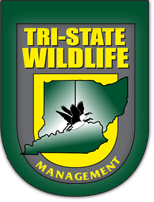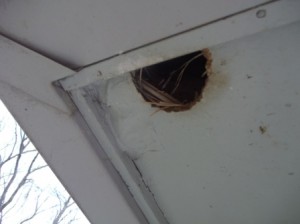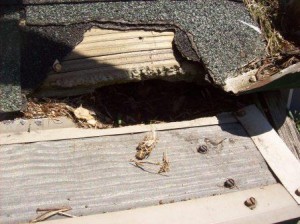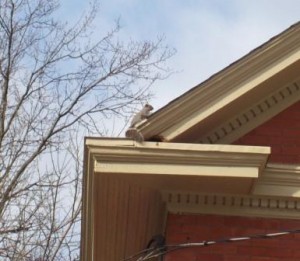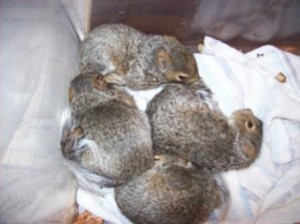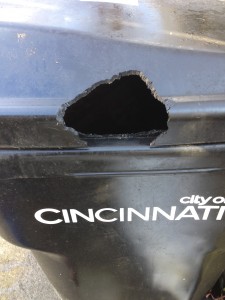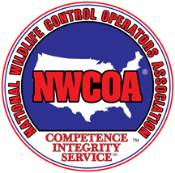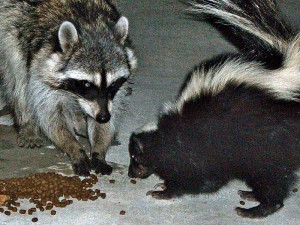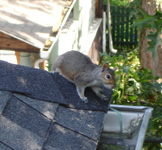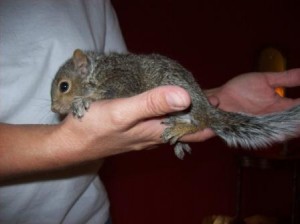For Wildlife Removal in Highland Heights, KY or anywhere in Northern Kentucky, Cincinnati, or SE Indiana, call Tri-State Wildlife Management at (859) 635-0037.
Summer is over and fall is well underway. This means that wild animals are beginning to prepare for the cold winter. Squirrels are fattening up on mast (tree fruits and nuts), which helps them stay warm and acts as a reserve when food is scarce during the winter. Squirrels also collect and bury food in shallow holes (caches) to be eaten later. Raccoons are eating more too in preparation for winter when food is more scarce. In the Greater Cincinnati area, raccoons may become inactive if there is severe cold or a long winter storm, but they typically still venture out of their dens in search of food.
Not only are squirrels and raccoons fattening up in preparation for winter, but they are also searching for a nice, comfortable den. In cities and suburbs, wildlife often takes advantage of man-made structures such as houses; more specifically, attics and chimneys. Squirrels and raccoons typically return to their previous cold weather den sites, so if wildlife has taken up residence in an attic in years past, most likely, they will return. Habituated squirrels and raccoons must be trapped and the entry points sealed in order to prevent reentry. It’s important to note that if a homeowner has had squirrel or raccoon issues in the past but did not trap the violators, they will attempt, usually successfully, to gain access into a home by chewing a new entry. In a similar scenario, if a homeowner has wildlife entry issues in the past, it may come back to haunt them. Both habituated and non-habituated squirrels and raccoons can smell the scent from an attic that has had squirrel or raccoon inhabitants, so it’s important to be on the alert for any new entries and to repair any vulnerable areas (potential entries) on a structure.
The courteous staff of Tri-State Wildlife Management works for you to provide a cost effective solution to your wildlife intrusion and/or damage issue. As a full service company, we initiate an Integrated Wildlife Management Program beginning with an inspection and customer education, followed by removal of intrusive wildlife and repair of wildlife damage. TSWM also offers prevention, restoration, and cleanup services. TSWM is fully licensed and insured, and we stand behind all our work.
Tri-State Wildlife Management – Protecting You, Your Property, and Your Investment.
